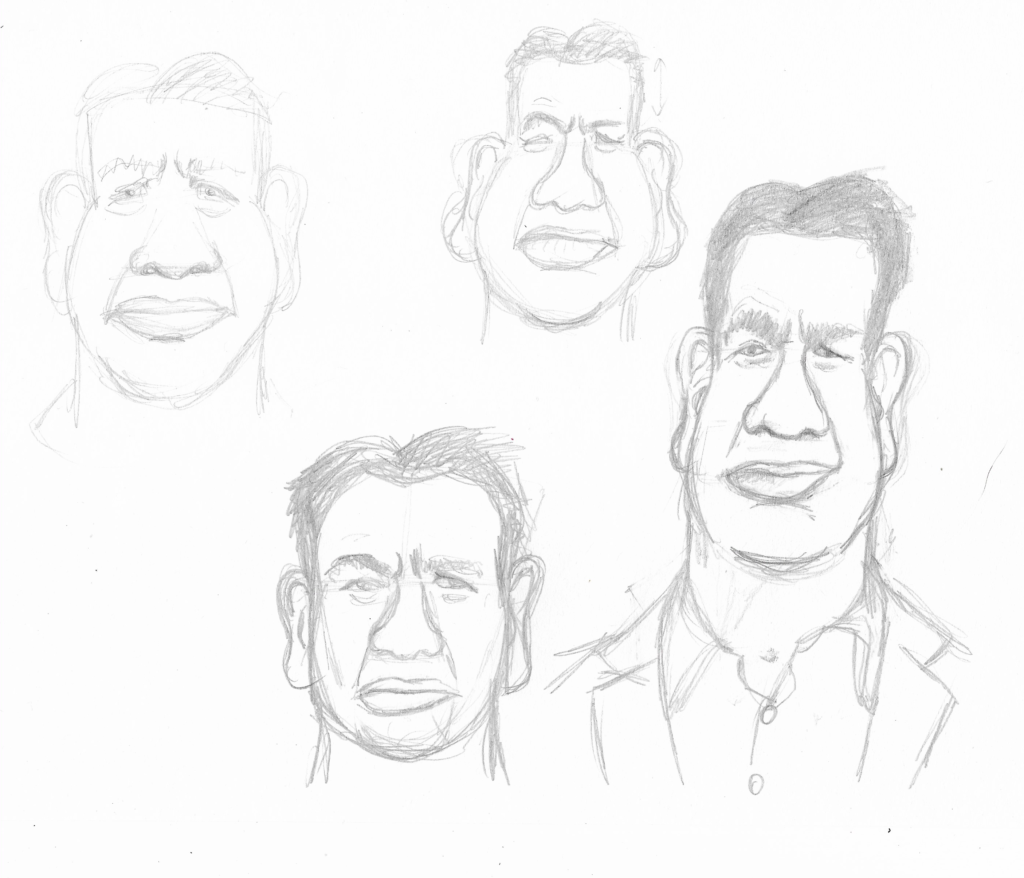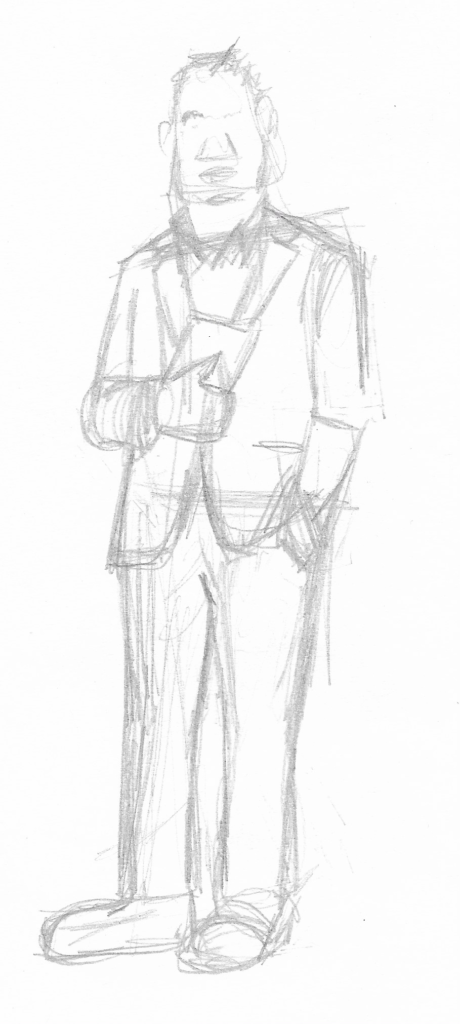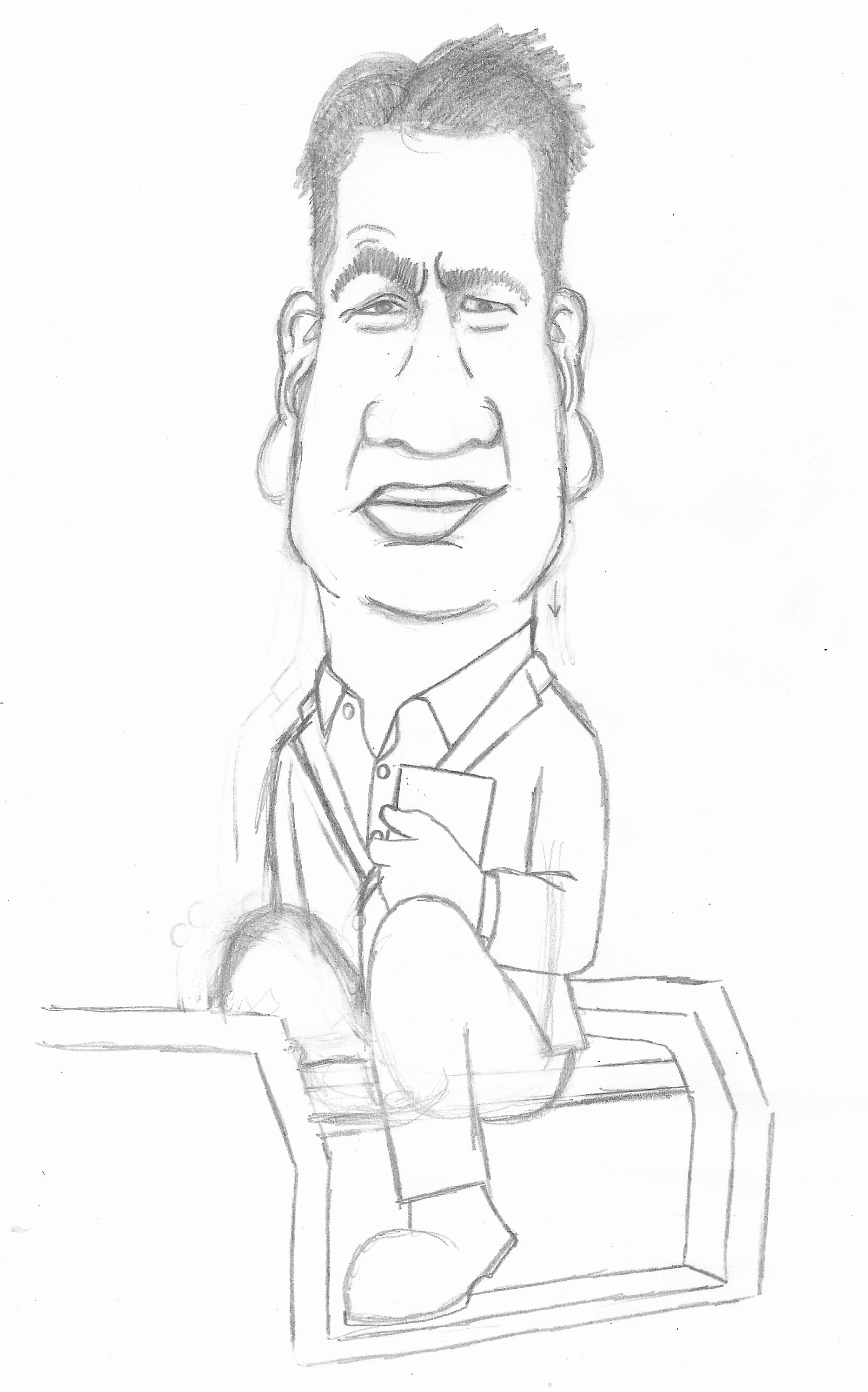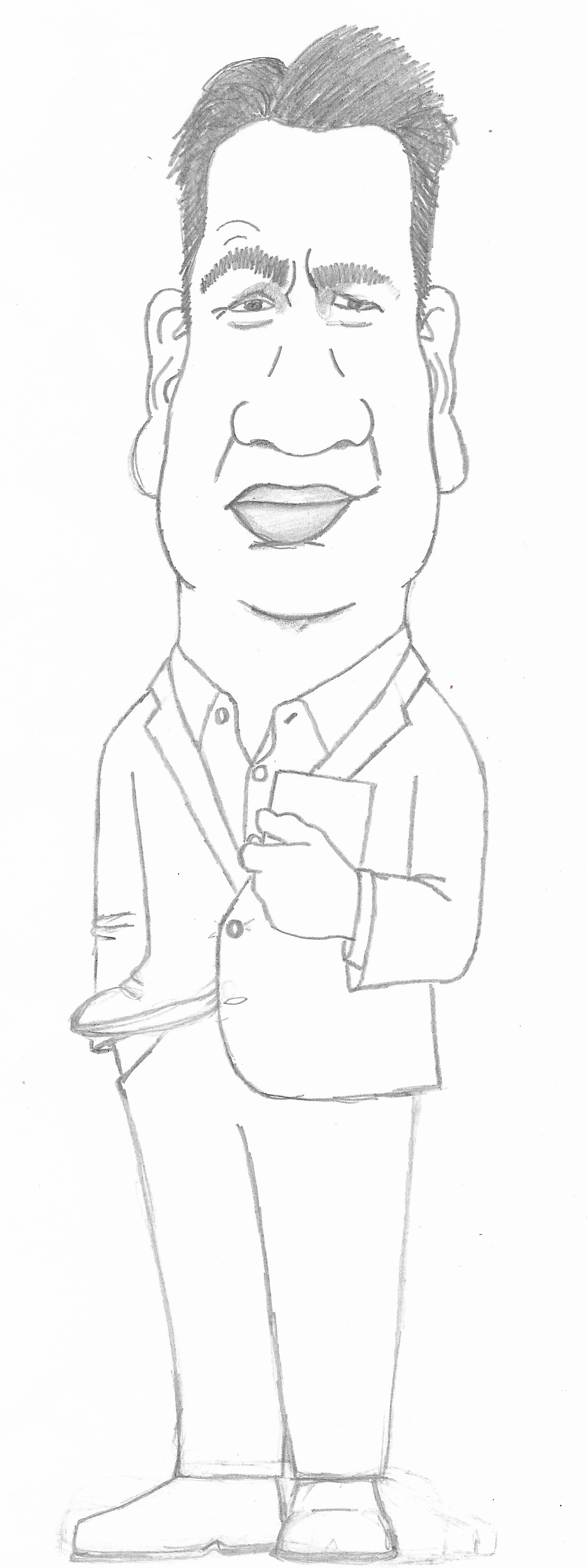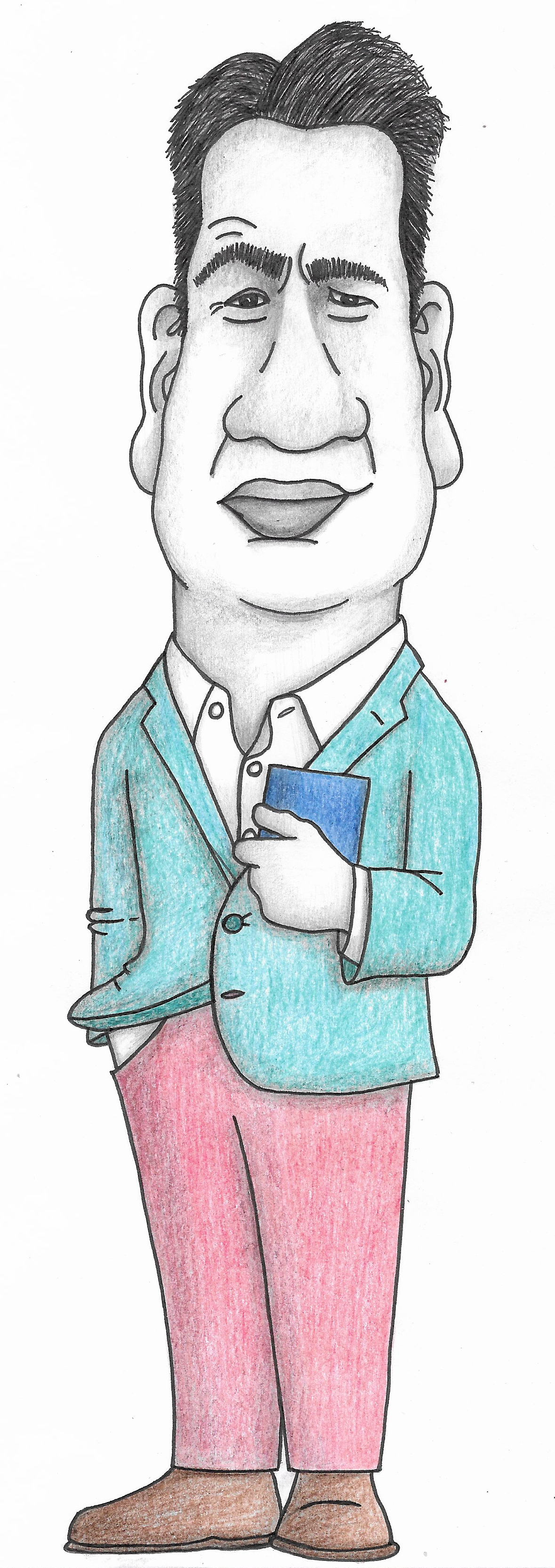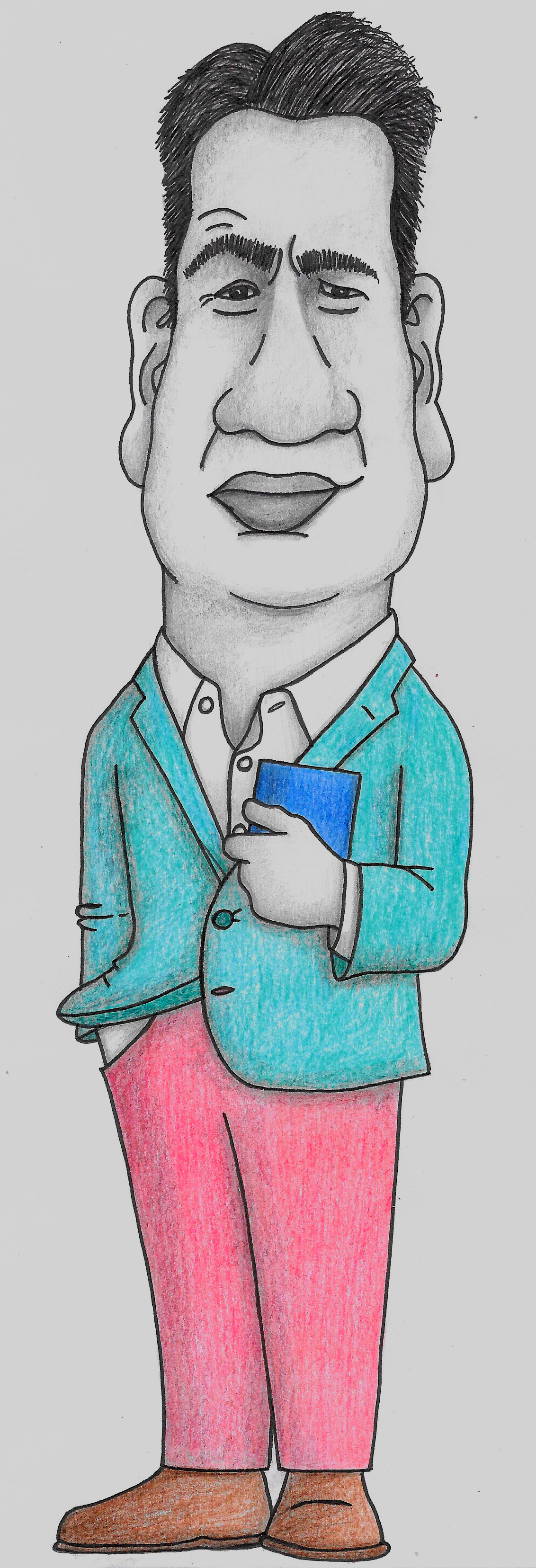Brief
The word caricature comes from the Italian ‘caricure’ meaning ‘to exagerate’. Often people assume that caricatures are drawn to point out perceived flaws or imprefections, but the exaggeration can work both ways, as caricatures can also be flattering or a more perfect version of the subject. Political paintings of dictators showing them riding wild horses or standing in front of adoring crowds are just as much caricatures as images of them with herring grins or as ogres or idiots.
Choose a famous person you want to caricature; it needs to be someone well-known so we can see how successful or accurate your drawing is.
Find some photographs of them that have much detail as possible and that shown them from different angles. Working from your photo-reference, make drawing of them as a whole-body portrait, attracting attention to their particular or notable facial and physical features or aspects of their personality.
The aim of the exercise is not to be cruel or mean but hopefully to gently point out and magnify their personality through their appearance. This could extend to their clothes, or their social context, if for example they are a sportsperson or celebrity. Don’t just trace from the photograph, but try to re-imagine them as an original drawing that accentuates their natural character and look.
Research
I began this exercise by looking at a range of examples of caricatures, initially creating a Pinterest board. It was very apparent from these that the artists have honed on specific features unique to that particular famous person and exaggerated them, but only to the point where the individual is still instantly recognisable (as long as you know who they are in the first place…). Most seemed to follow the method of giving the person an oversized head compared to the body.
From my research I also found it interesting how there was such a variety of techniques used by artists, for example some employ a very stylish realism whilst others are able to capture an individual’s likeness in a limited number line strokes.I found both methods equally impressive (and intimidating!).
I could not find as many examples of full-body caricatures, but it is evident that a person’s posture, clothes and so on are very important in capturing his/her character.
Next I discovered a playlist about drawing caricatures on Youtube (below). The main advice I picked up from watching some of these was having a process of going from quick thumbnail sketches to rough sketches and refining these several times. I also noted that it is important to try different head shapes, for example, in the thumbnails and then have a range to select the best one to take further.
The artist, Court Jones, who presents the Youtube series above is extremely talented at drawing caricatures (as well as other illustrations) in a hyper-realistic way so they look like ‘real people’ with exaggerated features.
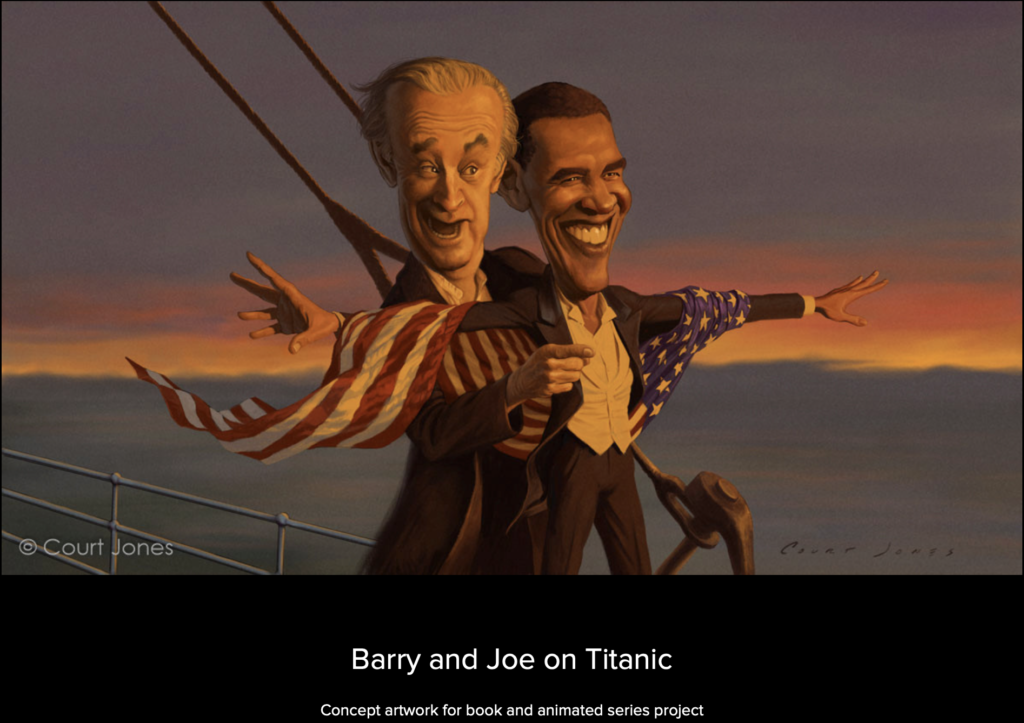
I then decided to take a look at an artist who uses a completely different style for caricatures and selected John Minnion as one of his drawings was shown in the introduction to this exercise. He tends to not use colour and his drawings are much more ‘simplistic’ than Court Jones, but I found them just as impressive (if not more so). It demonstrated that they key to good caricature is capturing the subject’s essence and remembering to focus on this, regardless of what method is used to depict them.
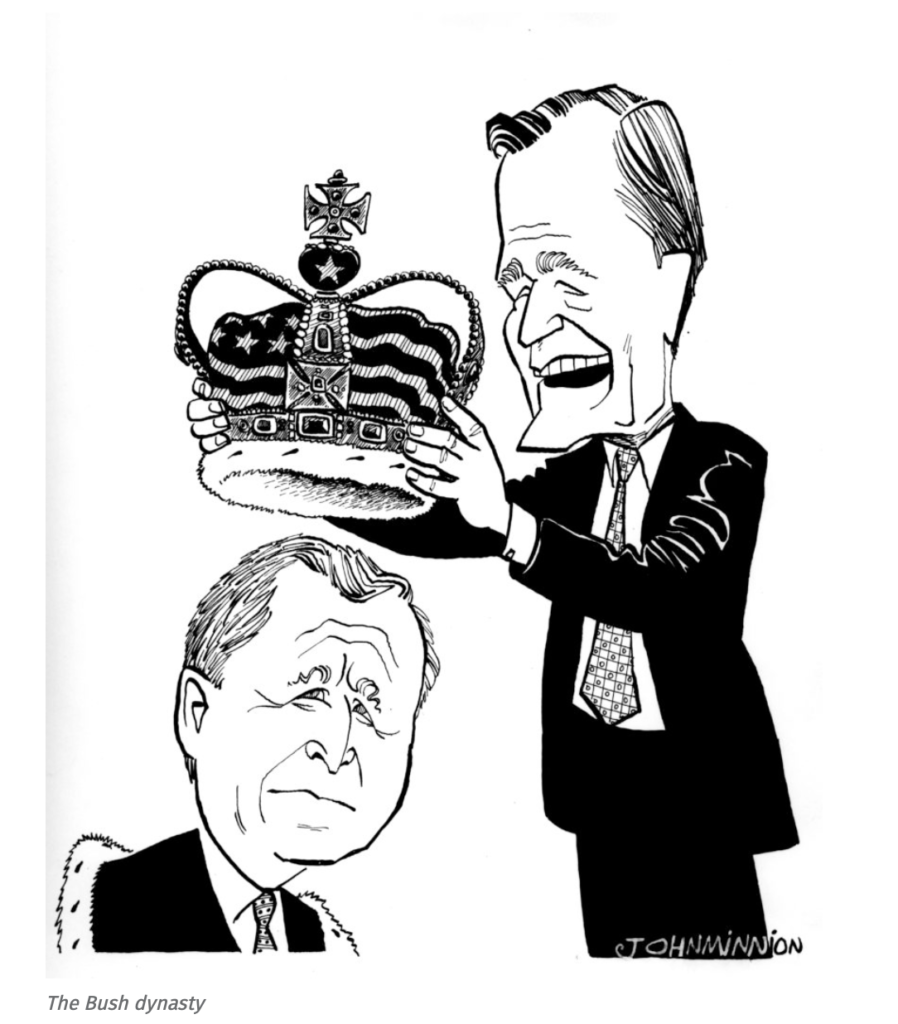
Selecting a Famous Person
I decided it would be best to choose an individual with particularly distinct features as these would be easier to exaggerate rather than someone with more subtle features. I was slightly stumped and then I thought of Michael Portillo. I am familiar with him from his TV work, e.g. Great Railway Journeys, rather than from his political days, so I wanted to focus on the former.
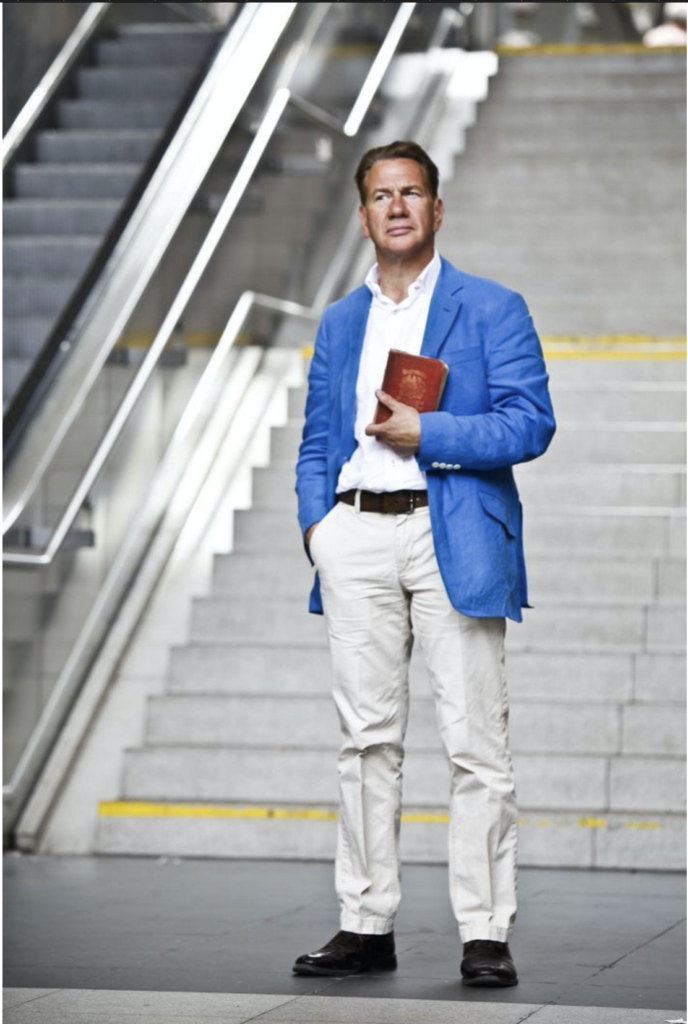
I spent some time collating reference photos and made a mental list of Portillo’s distinctive features:
- a fairly high forehead;
- deep frown lines;
- an arched right eyebrow;
- slanting upper eye lid over left eye;
- a wide, prominent nose;
- large ear lobes;
- deep smile lines from his nose to mouth;
- prominent lips, slight larger to right of bottom lip;
- colourful clothes;
- holding a copy of Bradshaw’s train travel book.
I managed to find two caricatures of him, one by John Minnion and the other by Charles Griffin, both of which capture Portillo really well.
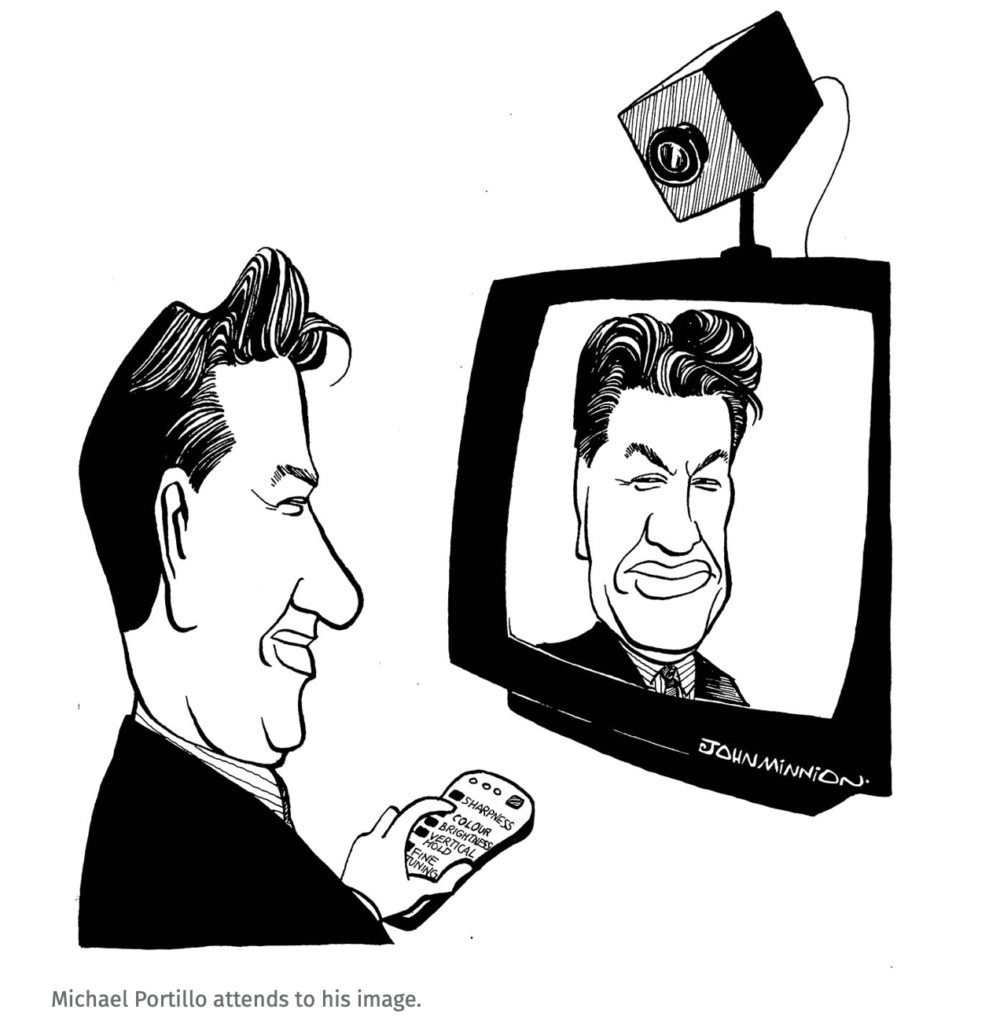
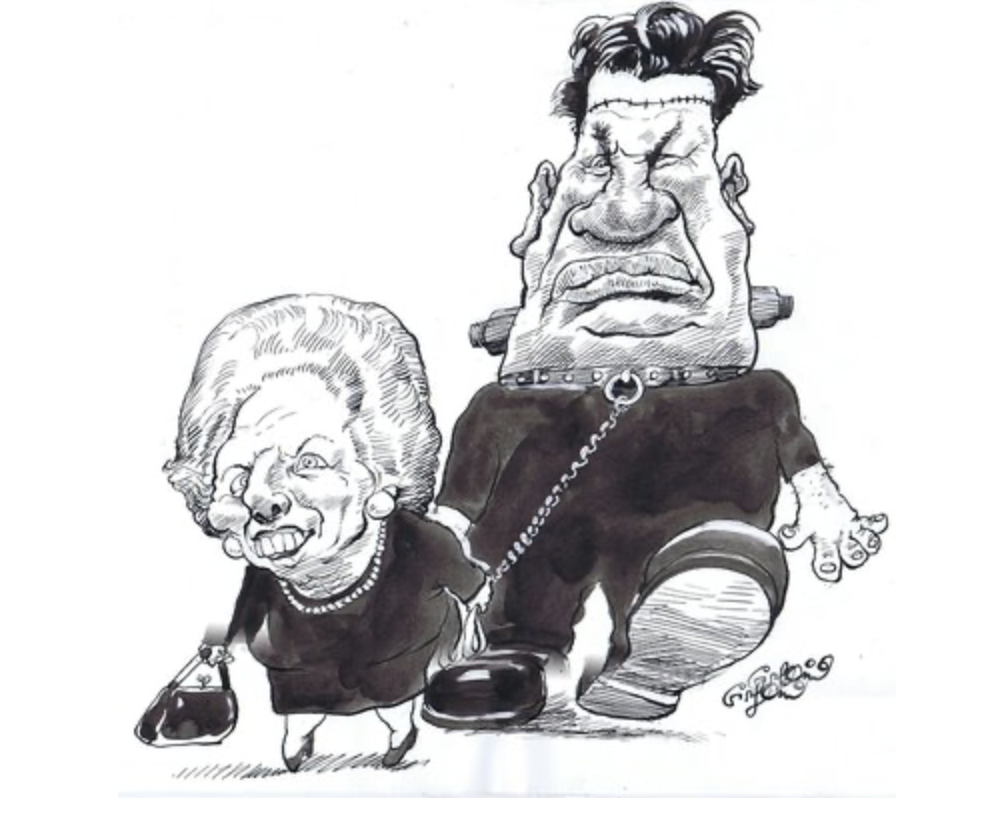
Thumbnails
As suggested in the Youtube series I watched at the start of my research I drew various quick sketches of Michael Portillo’s head. The first three (on the left below) were not very successful, but then I managed to create the final sketch (on the right below), which I felt was a good base to work from. I had attempted to really focus on the distinct features I had listed and make sure I kept these in mind as I drew.
Reaching the point above had taken a great deal of effort and then I remembered I was going to have to draw the whole body! My first attempt, below, was not right as it looked too generic and would not go with the exaggerated head style.
I decided to move on to the rough sketches.
Rough Sketches
As I used pencil and paper for the rough sketches (rather than my computer), it was not feasible to keep stopping to scan the progress as I went, but the rough sketches involved a great deal of erasing, redrawing and flipping the paper over on my light-box a countless number of times to check the balance, etc. of the drawing.
As is evident in these drawings, I initially wanted to depict Michael Portillo on a miniature railway as I thought this would make the drawing more cheeky, but I could not get the position of the far leg correct. In the end I abandoned that idea and had him standing instead.
The scan below is the reverse side of one of rough sketches which shows the amount of corrections I had to administer in order for the drawing to not be lopsided.
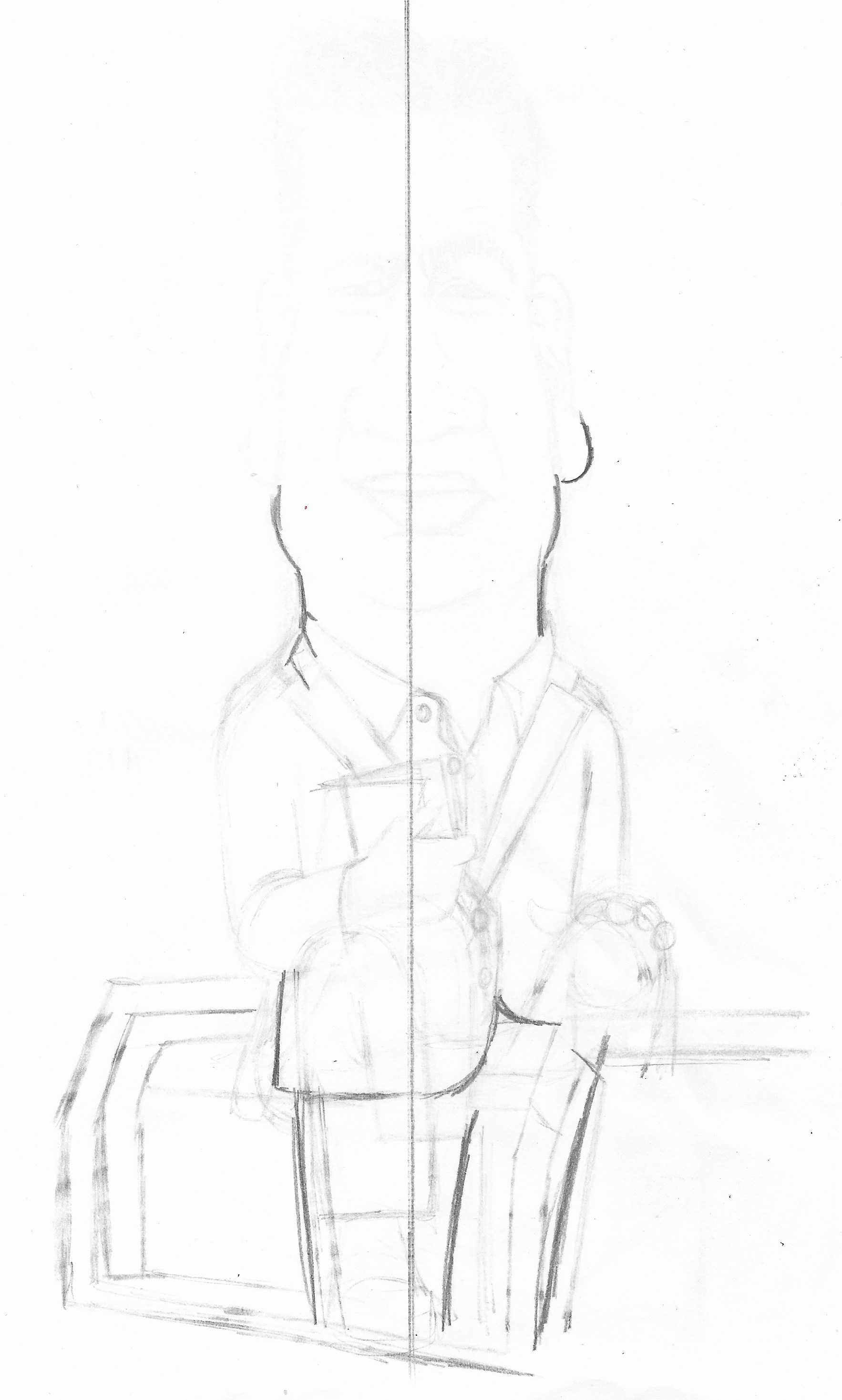
Final Drawing
I eventually reached the stage below, which I was quite pleased with. I thought there was a similarity and I had not been unkind in my depiction of Michael Portillo. I was disappointed with my rendering of the clothing, but that is because I need to practice drawing materials and clothing. However, as a simple caricature of Michael Portillo, I felt I had met the brief with my effort.
I used 0.1 black fineliner and my light-box to create a final pen version. I decided it was quite important to add colour for his bright clothes, so I used coloured pencils for this. I then attempted to add some tone using a graphite pencil, which I felt was not so successful on the clothes as the skin. Finally I went over the black lines again with 0.5 fineliner.
The brightness of the clothing did not really come across in the drawing above, so I increased the saturation in the example below to show a brighter version.
Final Thoughts
After the challenge of the previous exercise, I found this exercise enjoyable from the beginning to end. I was pleased with the final drawing I managed to create and felt I had met the brief. Since discovering the technique of flipping the paper over on a light-box to check the image, I have found my drawings to be more balanced and aesthetically pleasing.
References
Adobe, (n.d.). How to Draw Caricatures for Beginners. [online] Available at: https://www.adobe.com/uk/creativecloud/illustration/discover/how-to-draw-caricature.html [Accessed 14 December 2021].
Proko, (2016). The Art of Caricature with Court Jones. (video) Available at: https://youtu.be/FOURPIkpPXk [Accessed 14 December 2021].
Jones, C. (n.d.). Court Jones. [online] Available at: https://www.courtjones.com [Accessed 14 December 2021].
Bridgeman Images, (n.d.). Bridgeman Images – Search Results: John Minnion. [online] Available at: https://www.bridgemanimages.com/en/search?filter_text=John%20minnion&filter_group=all&filter_region=GBR&sort=most_popular [Accessed 14 December 2021].
Minnion, J. (n.d.). John Minnion. [online] Available at: https://johnminnion.com [Accessed 14 December 2021].
The Political Cartoon Gallery (n.d.). Griffin, Charles B. b-1946. [online] Available at: https://www.original-political-cartoon.com/cartoon-gallery/artists/griffin-charles-b-1946/?c=uk-cartoons&page=2 [Accessed 14 December 2021].
